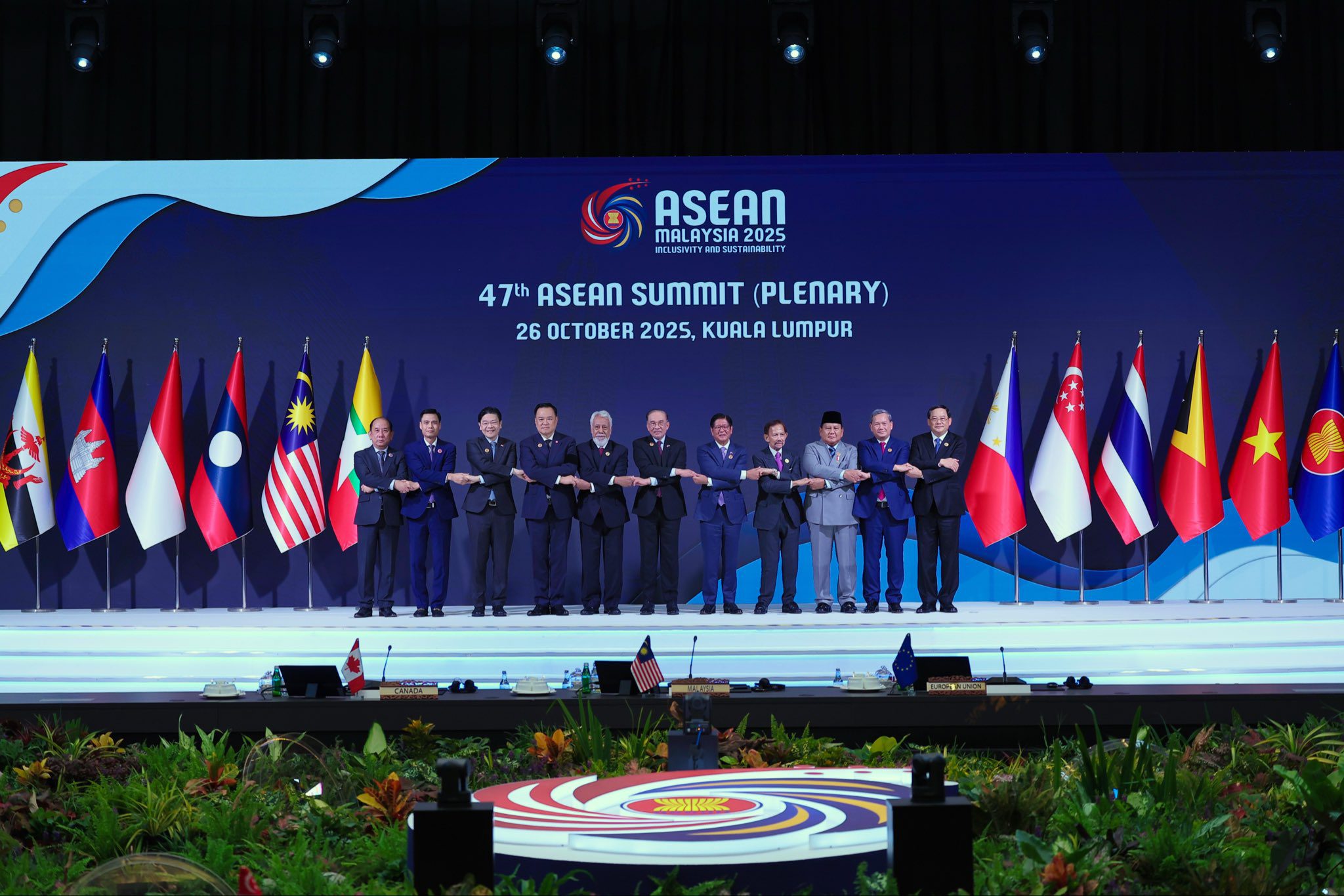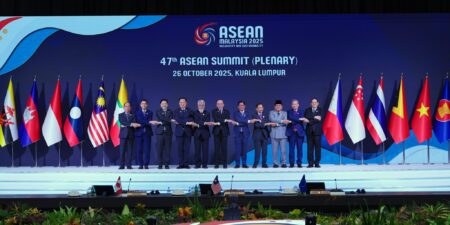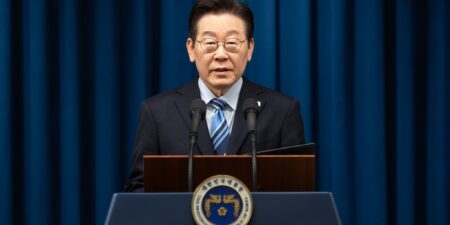BGA Senior Adviser Dr. Thitinan Pongsudhirak wrote a client update on the 47th ASEAN Summit.
It is timely and beneficial to take stock of the Association of Southeast Asian Nations (ASEAN)-related summits late last month as the first year of U.S. President Donald Trump’s second term draws to a close. In particular, it is important to consider to what extent “ASEAN centrality” — the notion and norm that ASEAN plays a central organizing role with a corresponding authority to convene leaders’ meetings to work toward regional peace and prosperity — still holds sway. While the bloc is a diverse grouping, the case can be made that ASEAN’s fragile state at least since 2012 — when ASEAN under Cambodia’s chair failed to produce a joint statement due to disagreement over China’s maneuvers in the South China Sea — is showing signs of recovery.
ASEAN’s summits in 2025, held amid heightened tensions between the United States and China and Trump’s aggressive economic nationalism and protectionism, have enabled the grouping to regain traction and reclaim the initiative. ASEAN not only weathered Trump’s threats and intimidation but was able to add Timor-Leste as a new and 11th member state, while holding ground on the Five-Point Consensus in Myanmar’s civil war and upcoming sham polls and cementing the China-ASEAN Free Trade Agreement. Brazil’s President Luiz Inacio Lula da Silva and Canada’s Prime Minister Mark Carney also participated in an effort to unite like-minded countries and organize beyond the U.S.-China structural binary.
The summit season began as ASEAN centrality versus Trump’s transactional deal-making. Trump conditioned his participation on the signing of a peace agreement between Thailand and Cambodia to burnish his credentials for a Nobel Peace Prize. Under Prime Minister Anwar Ibrahim, Malaysia as ASEAN chair needed Trump to join because the U.S. president is the most powerful among the participating leaders in the Malaysian capital. For their parts, Cambodian Prime Minister Hun Manet and Thai Prime Minister Anutin Charnvirakul had expedient reasons to let Trump preside over a truce signing ceremony because both sides needed to codify final trade agreements and tariff deals with the United States. Ultimately, Hun Manet and Anutin inked a “peace accord,” presided and countersigned as witnesses by Trump and Anwar.
Notwithstanding the Thai-Cambodian dispute — both sides appear poised to restart military conflict — ASEAN held its ground this year. It could be said that Trump would not have come had he not obtained what he wanted in terms of the Thai-Cambodian agreement. It could be pointed out that Trump ceremonially stopped over for the ASEAN-U.S. summit and East Asia Summit, whereas his real aims were to tighten ties and negotiate trade deals with the Japanese and Korean governments, rendering the Southeast Asian grouping a mere sideshow. To Trump, he was the agenda setter and extracted what he wanted out of a nearly weeklong trip to Asia. In this context, ASEAN could be seen as weak because it had to appease and accommodate Trump to entice him to join.
But to ASEAN, the grouping also got what it wanted. Trump joined the ASEAN-U.S. summit and the East Asia Summit, finalizing trade deals with Malaysia and Cambodia with official signings and Thailand and Vietnam with framework agreements. More importantly, ASEAN carried on with its leaders’ meetings with other major and middle powers, such as Japan and the European Union, not to mention greater cooperation with Brazil and Canada. Discussions of a potential EU-ASEAN trade agreement also made headway. The Southeast Asian bloc convened a leaders’ meeting among Regional Comprehensive Economic Partnership members and stuck to its Five-Point Consensus, which has barred Myanmar’s junta leader Sen. Gen. Min Aung Hlaing from attending ASEAN-related summits since 2021. For ASEAN after Trump left Kuala Lumpur, the remaining meetings conjured up images of a “world minus one,” international cooperation for security and trade in Washington’s absence.
The more united and cohesive the ASEAN grouping becomes, the better it is for its member states. A strong ASEAN would be better equipped with more bargaining power to maintain its strategic autonomy vis-a-vis China. On the contrary, a weak ASEAN means an easy target for China. In fact, China has had a divisive effect on ASEAN since 2012. Yet even smaller ASEAN member states that are beholden and indebted to China, such as Laos and Cambodia, do not want to rely exclusively on China. This is why they still stick together within the ASEAN camp. A weak ASEAN also means the grouping is seen and felt less as an organization and more as just another region. When ASEAN centrality is weak, Southeast Asia reverts back to being more of a region, which is more vulnerable to major-power influence and dominance, especially by China.
While ASEAN states do not want China to dominate their region, they also do not want to see a U.S.-China military conflict and warfare. The United States is the biggest export market for Southeast Asian economies, and China is their largest economic partner. ASEAN centrality allows member states to navigate the U.S.-China conflict together with a more collective voice. For small economies like Brunei, Cambodia and Laos (and now Timor-Leste), ASEAN centrality is critical because it gives them agency and voice. The leaders of these small countries can hardly find opportunities to be in the same room with Trump or Chinese President Xi Jinping without ASEAN. In other words, ASEAN remains the one and only agency for Southeast Asia on the global stage.
For the United States, ASEAN centrality and unity are less of a challenge because ASEAN member states see Washington as a useful and necessary “offshore” security balancer vis-a-vis China. Yet Trump, as opposed to former Presidents Barack Obama and Joe Biden, has played a similar divide-and-rule game compared to China by doing trade deals with ASEAN economies bilaterally and individually rather than as a bloc. Thus, ASEAN states do not want the United States and China to go to war or to be dominated by either superpower, although the fear of China’s dominance is greater because of the giant neighbor’s geographical location. What Trump is doing with tariffs and protectionism is also a form of bullying and domination to ASEAN.
This is why ASEAN tries to hedge and counterbalance between the two superpowers and to constantly look for a “third way” and alternative organization and collaboration beyond the U.S.-China rivalry. Japan, for example, is a favored “third way” leader among ASEAN member states, and therefore Indonesia and Thailand have been interested in the Japan-led Comprehensive and Progressive Agreement for Trans-Pacific Partnership. Indonesia’s membership earlier this year in the BRICS+ along with Malaysia’s, Thailand’s and Vietnam’s partnerships also demonstrate intent to maneuver beyond the U.S.-China competition. The Southeast Asian states’ focus on the Global South is also telling, similar to ASEAN’s recent cooperation with China and the Gulf Cooperation Council. Brazil’s enthusiastic participation last month may also lead to more ASEAN inroads and connections with Latin America. Clearly, there is frustration with Trump as he asserts U.S. influence and wariness toward China due to its regional belligerence in the South China Sea and the Mekong region.
ASEAN member states have more interest in maintaining unity than risking fragmentation. Southeast Asia without ASEAN would be prey to superpower competition and conflict between the United States and China. ASEAN will fluster and frustrate analysts and stakeholders alike, but the specter of ASEAN’s disintegration motivates member states to stay intact because they have nowhere else to go as a motley collection of smaller states and economies. As the ASEAN chair now rotates to Manila and Singapore in 2026-2027, what took place last month was a reaffirmation that the grouping continues to be resilient and consequential in its own ways, however limited. Business planners operating in Southeast Asia should deal with ASEAN economies on an “a la carte” basis, picking, choosing and combining what works and fits for their purposes.
We will continue to keep you updated on developments in ASEAN. If you have comments or questions, please contact BGA Senior Adviser Thitinan Pongsudhirak at thitinan@bowergroupasia.com.
Best regards,
BowerGroupAsia

Senior Advisor
Thitinan is a renowned scholar, journalist and expert in international relations and domestic politics across Asia. He has spent more than three decades analyzing and advising on Thailand and the region’s political economy, geopolitics and policy. He helps BGA and clients understand in-depth the global, regional and domestic issues that affect business. Thitinan is a professor of international relations and international political economy at Bangkok-based Chulalongkorn University’s Faculty of Political Science and a senior fellow at its Institute of Security and International Studies. He has lectured widely at local and international universities, military colleges and international organizations on political and ...
Read More






















